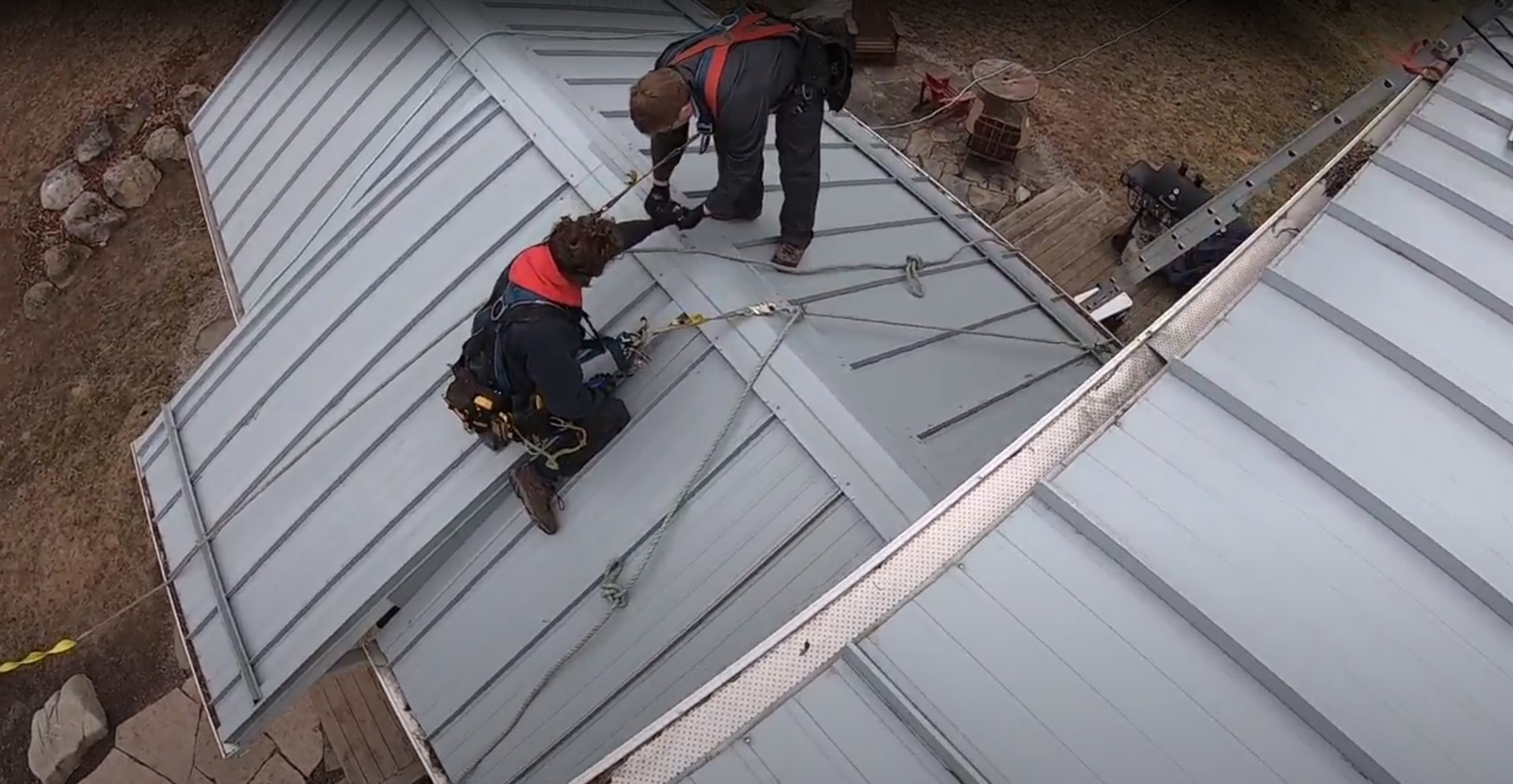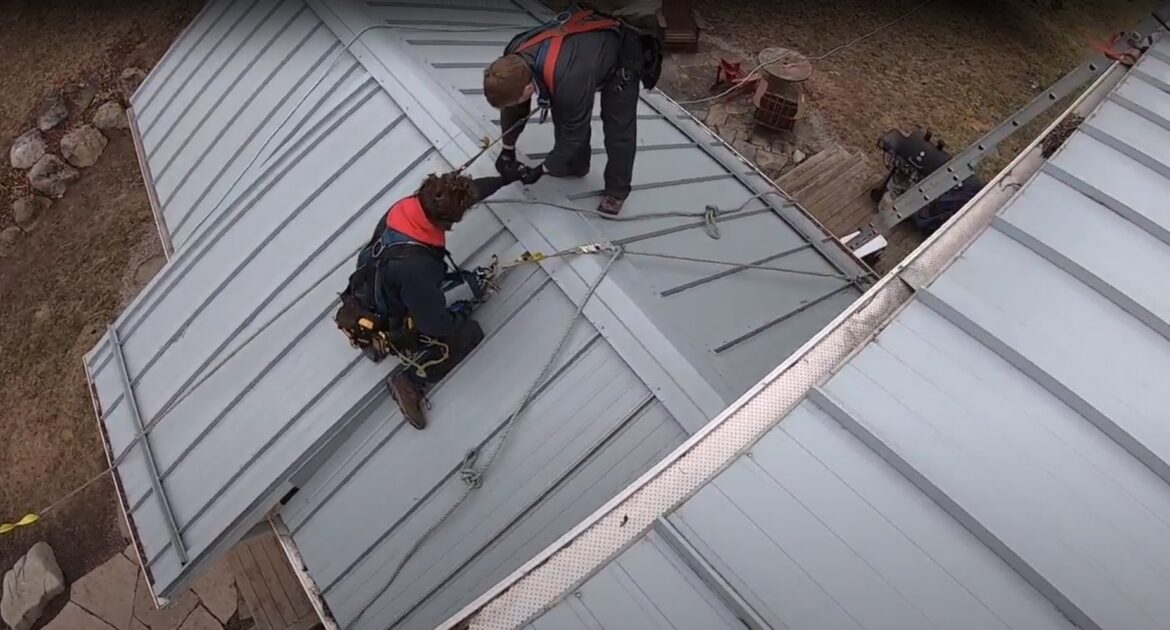When you own a home or business, a choice you may have to make at some point is what kind of roofing material you would like to use. There are many different types available, from tiling to asphalt shingles, but aluminium has become a popular choice for many because of its durability. One of the most common entry points wildlife use to invade your property is through the roof. But, can aluminum roofing protect your home against these invasions? Let’s discuss the pros and cons with regards to wildlife visitors.
Pro: Tougher Than Asphalt
While asphalt tiles come in a variety of colours and can give your roof a unique appearance, wild animals like raccoons, mice and roof rats can pry up these tiles and gain entrance to your attic. Once rodents enter your home this way, it can be difficult to even notice they have entered, since your roof is such a low traffic area. When asphalt tiles or roof shakers are torn away by wildlife, the space left can provide rodents with a comfortable breeding ground. An aluminium roof is generally more durable than one made of shingles or tile and presents fewer opportunities for wildlife to make a home there.
Con: Birds May Still Nest There
Few animals are more persistent and protective of a perceived territory than birds. While some species prefer to avoid people and their homes, others make a habit of nesting in vent spaces, eaves and gutters. Invasive bird types, like starlings and pigeons, may build in the same spot each year once they find a comfortable space on your roof. While an aluminium roof may provide fewer places for birds to nest, it is still a good idea to have your gutters and eaves inspected regularly to ensure bird nest material does not pose a fire hazard.
Pro: Less Vulnerable to Droppings
Bats and birds both have droppings that contain a high amount of acid that can eat through wood, stone and tar-based materials. Unless you are aware of the presence of these animals, their droppings could accumulate and permanently damage roofing tiles. An aluminium roof has a tougher exterior that is not as vulnerable to these acids. It may be a good idea to discourage birds from roosting around your roof, even if you choose an aluminium design, as droppings may also damage your gutters over time.
While aluminium roofing is generally more resistant to bird and bat droppings, the organic matter may cause moss growth if the wildlife is not removed. A humid climate can accelerate growth, especially if your roof is shaded. If you notice moss on your roof, you may want to call in a professional to deal with its safe and permanent removal.
Con: Harder To Navigate and Repair
If you do choose an aluminium roof and find that squirrels or other rodents are trying to gain access to your attic through the chimney or unsecured roofing vents, you may have difficulty plugging any holes or entrance points because of the slickness of the material. This may be especially difficult during rainy or snowy weather conditions and could increase the risk of a serious fall.
Aluminum roofs may also be more difficult to repair, and in turn, more expensive. Earlier this spring, our Skedaddle team was called to a home in Guelph, Ontario to deal with a wildlife invasion in a home with an aluminum roof. Red squirrels were entering the attic through a small gap in the ridge vent. Our team crafted some custom colour-matched steel barriers to block the squirrels from entering, but still maintain the ventilation from the attic. We used quality material to ensure the squirrels would not be able to regain entry, and also used proper safety tactics and gear to ensure they would not slip on the smooth surface of the roof. Be sure to call a professional if you have any wildlife issues – handling wildlife is dangerous and can be even riskier when attempting to remove them on a slippery surface.
Pro: Aluminium Is More Gnaw-Resistant
Homeowners who choose asphalt shingles laid over plywood as a roofing material may find themselves sharing a home with gnawing rodents that have no trouble chewing through or removing shingles. Raccoons, in particular, are clever when it comes to pulling up and removing a shingle, making it simple for them to pry up flashing and gnaw through the wood and into your attic. Once there, they can ruin insulation, wiring and interior walls by chewing.
An aluminium roof may discourage any gnawing rodent from trying to invade your home because of its durability when compared to wood or tar-based material. You may want to ask your contractor about guarding the vents and gutters, as these areas may still be vulnerable to squirrels and roof rats that often search for gaps or industrial filling they can gnaw. This is especially common in the late fall when wildlife is searching for a warm place to hole up over the winter, and in the spring when expectant mothers are looking for a place to birth their litters.
An aluminium roof may protect your home or business against the encroachment of wildlife, but many species are clever and still find their way in. Skedaddle humane wildlife control can help, from attic restoration to humane animal removal, so contact us today for assistance.




